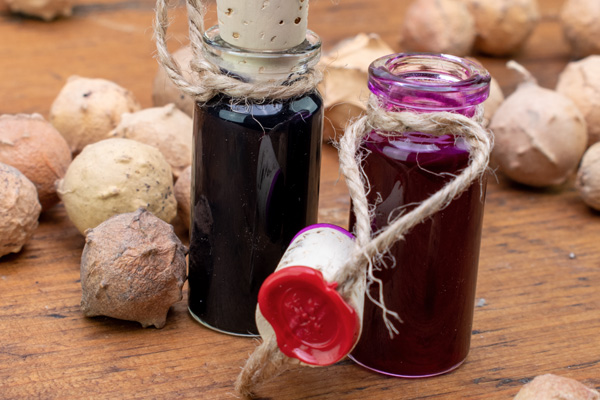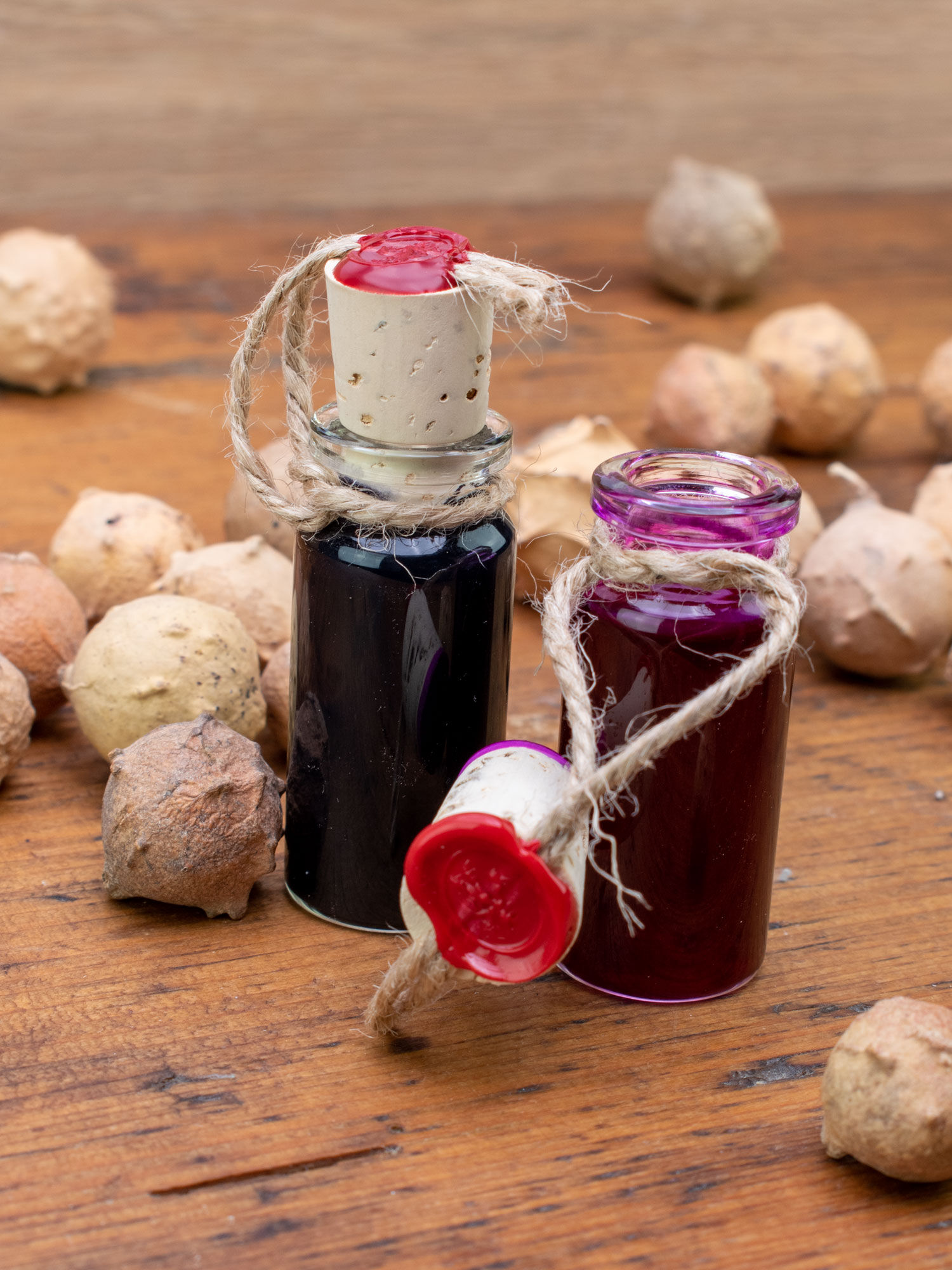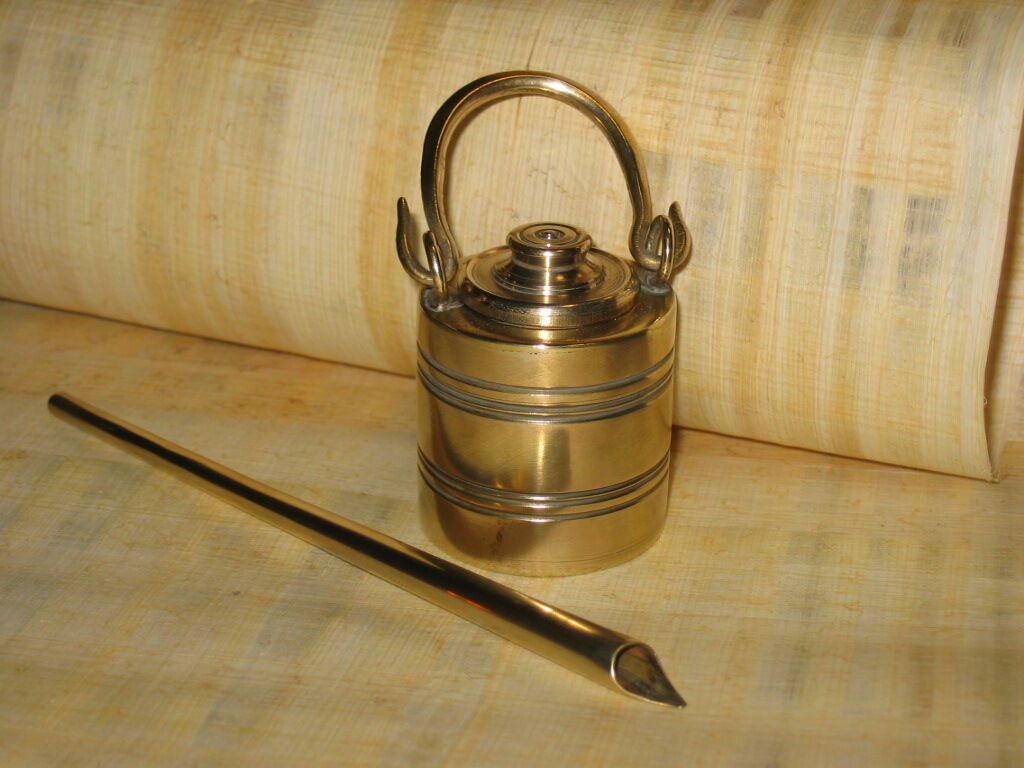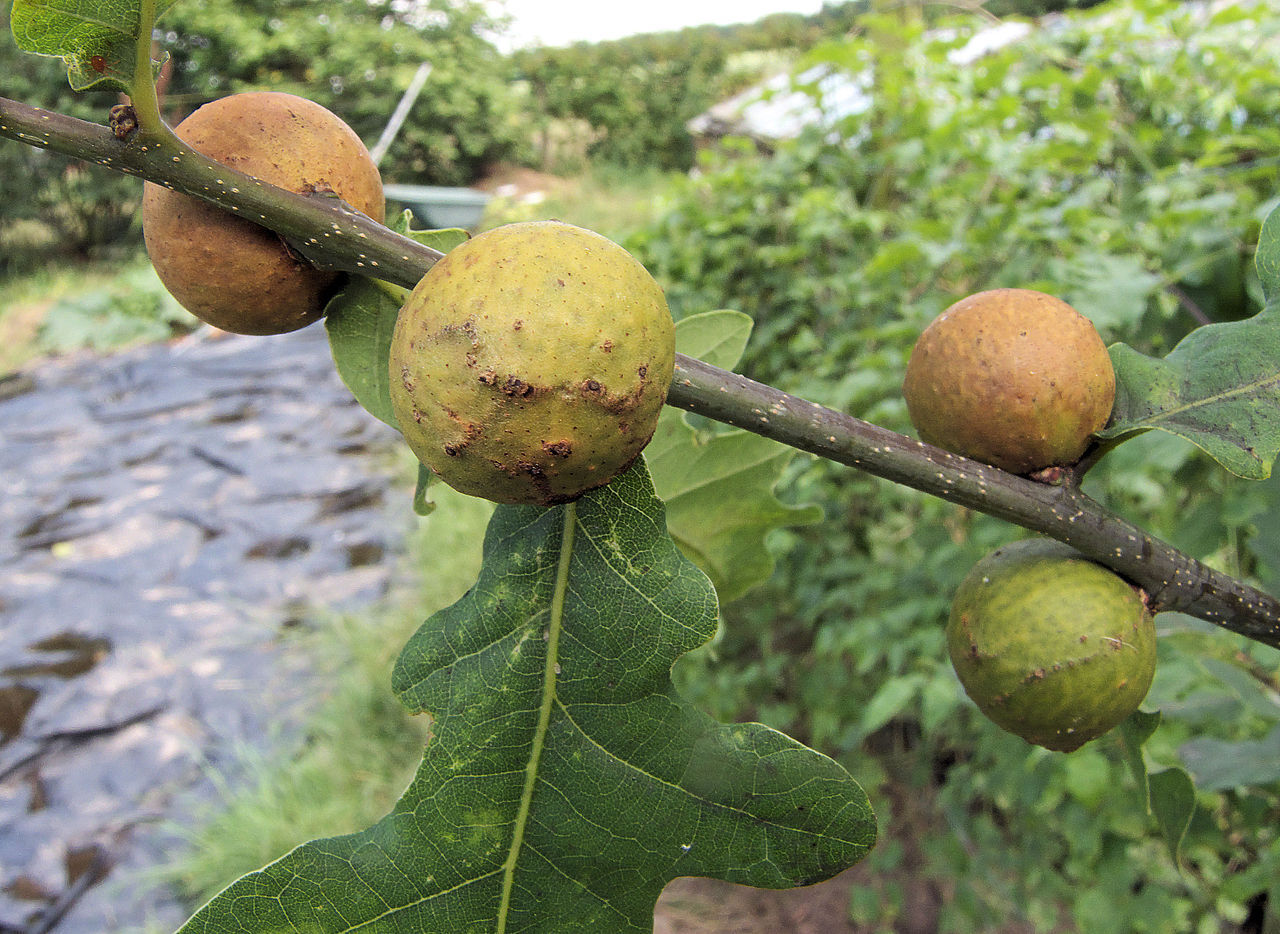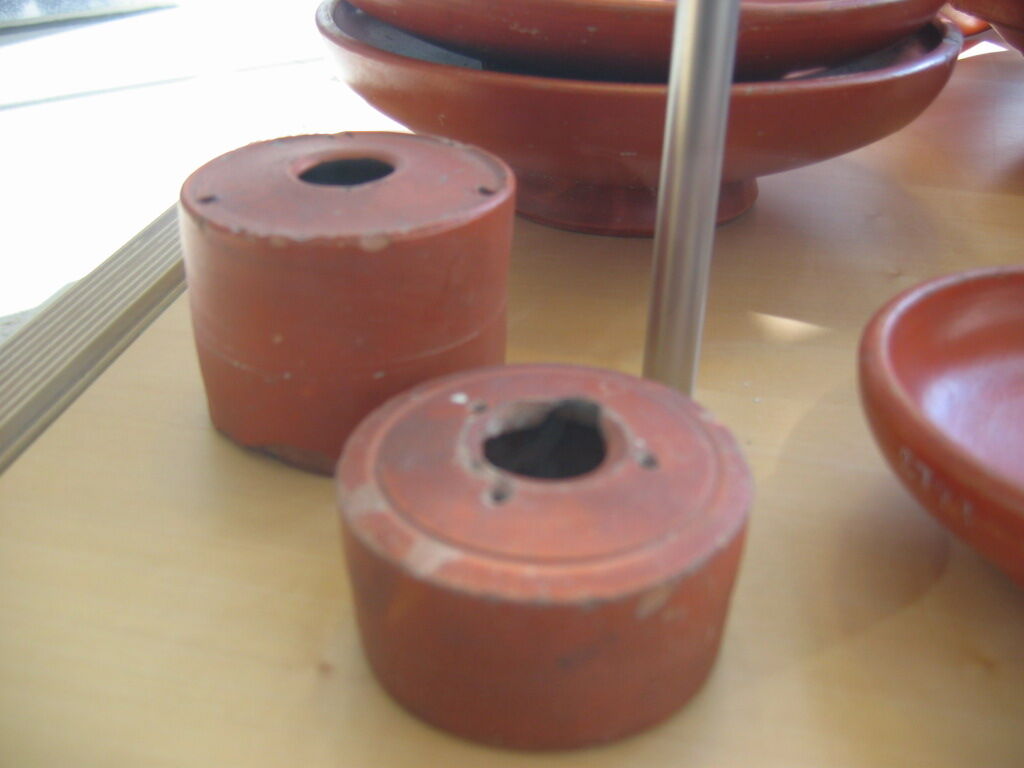Historical inks
Ordering & shipping
How fast is the shiping ?
Can I also order on account?
Returns
Do we supply to traders and museums?
Historical inks
The Romans wrote on papyrus or parchment with quill and ink. The quill, the so-called calamus, was usually cut from cane, canna, a perishable organic material. It is therefore not surprising that only a few specimens have survived, for example in a cremation grave in Intercisa. The ancient writing implements weathered too easily and it was too easy to procure new ones.
But there were also bronze nibs that imitated the shape of the reed pen. However, only a few specimens have survived. Clearly, reed nibs were cheaper, but above all they were more resistant. Moreover, reed nibs can be quickly re-sharpened with a sharp knife.
Finds safeguard historical ink
But now to the ink: The so-called atramentum was taken from special ink pots (atramentaria) made of metal, clay or even glass. There were also examples of Roman inkpots made of bronze or sheet metal. Most of them were cylindrical with a small, resealable hole in the lid through which the ink was extracted with the pen. A few years ago, so much ink was secured in inkstand finds that chemical investigations made it possible to reconstruct their composition.
According to this, ancient historical inks of the Romans consisted of a mixture of soot and gum arabic. Go on a voyage of discovery of ancient ink material on the pages of the Roman Shop! We have all the ingredients and the instructions to make the ancient writing serum yourself. You can also discover and purchase Roman writing pens on the pages of the Roman Shop.
Ancient writing sets
If you reconstruct a complete writing set on the basis of ancient finds, you will need a nib shaft and inkwell, a small knife for sharpening the nib, an ink stone and the appropriate rubbing stone for preparing the ink. All these items are kept in a leather case (theca calamaria) or a small wooden box. The depictions of portable writing utensil cases show that writing utensils were not only kept at home but also carried with them.
Write like the Romans: discover the world of beautiful antique pens and historical inkwells...
Quellen:
Galläpfel - https://commons.wikimedia.org/wiki/File:Andricus_kollari_oak_marble_gall,_knikkergal.jpg
Schools and authorities in DE can conveniently order on account. Private customers are welcome to use Ratepay purchase on account (Paypal service)
Safe and easy ordering within Germany from 75 €
Always new ideas and optimised products through our years of experience and intensive cooperation with schools and museums.
